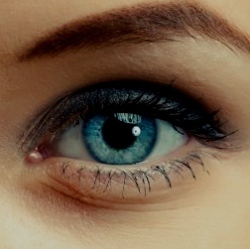
Analyzing 14,000 people, researchers found that those with a certain variant of a gene, called APLP2, were five times more likely to develop myopia in their teens if they had read an hour or more each day in their childhood. Those who carried the APLP2 risk variant but spent less time reading had no additional risk.
“We have known for decades that myopia is caused by genes and their interactions with environmental factors like reading and nearwork, but we have not had hard proof. This is the first known evidence of gene-environment interaction in myopia,” says the study’s lead investigator.
Reducing APLP2 activity in eyes could prevent myopia. Although it’s not yet known how genetic variation at the APLP2 gene causes myopia, Dr. Tkatchenko and his colleagues think the risk variant may increase the amount of APLP2 protein produced in the eye, which in turn may cause the eye to undergo excessive elongation.
They found that mice exposed to a visual environment that mimics reading were less likely to develop myopia when little APLP2 protein was present in the eye. “By reducing the level of APLP2 in the eye, you can reduce susceptibility to environmentally induced myopia. This gives us an opportunity to develop a therapy to prevent myopia in everyone, regardless of the APLP2 variant they carry,” Dr. Tkatchenko says.
Developing such a therapy, however, could take years, as researchers don’t yet know how APLP2 levels could be reduced in people. And the therapy would be most effective in young children, before the eye has started to elongate and become myopic.
